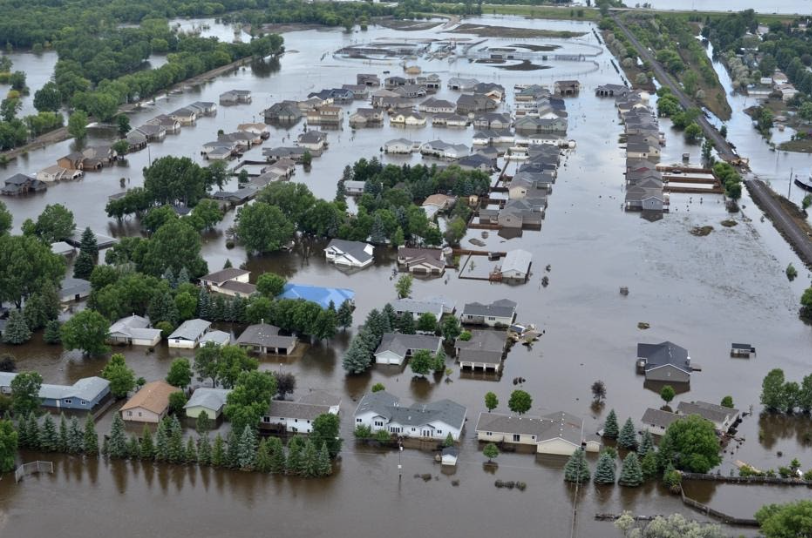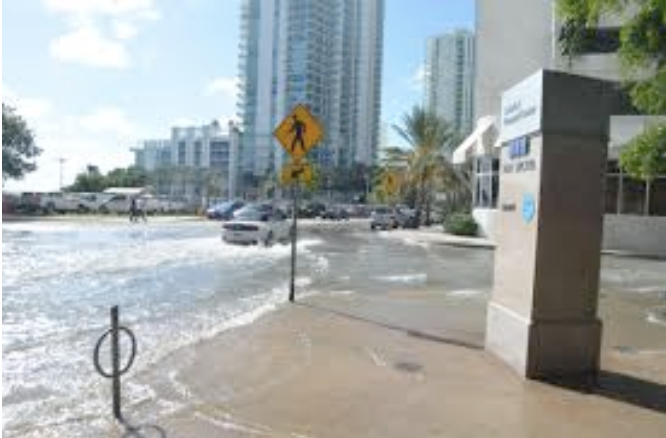The Ice Caps are Melting, and Your City Could Sink!!
Author: Samantha Tomar, Edited by: Dr. Priya Roy
Everyone knows that the polar ice caps at the North and South Poles are melting at an alarming rate, more in the last 20 years than in the last 10,000 years [1]. But do you know the impacts it has on places closer to your own home? Believe it or not, the ice that’s melting at the poles can have far-reaching effects on several coastal islands around the globe including your favorite holiday spot in the US.
Figure 1: Melting Glaciers in Greenland (Source: https://pxhere.com/en/photo/1090613)
Why Are The Glaciers Melting?
If you haven’t already learned about greenhouse gasses, here’s a crash course. Greenhouse gases trap heat in the atmosphere, which causes the warming of the globe (aka Greenhouse Effect, see Figure 2). The most common greenhouse gases include Carbon Dioxide, Methane and Nitrous Oxide [2]. Greenhouse gasses are part of the natural atmosphere but have increased at an alarming rate due to burning of fossil fuels and coal [2]. With the increase of fossil fuel and coal burning in the last century, more heat is now trapped in the atmosphere, causing the global temperature to rise, in turn causing the ice caps to melt.
Figure 2: What is a Greenhouse Effect? (Source: Creative Commons)
Useful Resources to know on Greenhouse gases & Global warming:
Keeling Curve – Carbon Dioxide Trends
How Much Has Melted?
According to NASA, the polar ice caps are melting at a rate of 9% per decade and in total, 128 trillion tons of ice have already melted [3]. As for the thickness of the ice, it’s 40% more thin than it was in the 1960s [3]. These are significant numbers, and the fact that the thickness of the polar ice caps has decreased 40% in just over 50 years is extremely concerning. Because of this melting, sea levels have risen 6 to 8 inches in the last 100 years according to the Environmental Protection Agency or EPA [3]. This is something we need to be thinking about because it effects not only the polar ice caps, but coastal areas around the globe.
Figure 3: Polar Bears are the most vulnerable to these thinning glaciers (Source: Creative Commons)
Learn more about Rising Sea Level here
What Cities are at Risk?
In the United States, many coastal cities and communities are at risk with increasing sea levels. According to Climate Central, the top 5 cities most vulnerable to coastal flooding are New York, Miami, Pembroke Pines, Coral Springs, and Miramar [4]. Climate Central’s full list is expanded to 25 cities at risk, including 22 from the state of Florida, a very popular vacation and retiring spot for Americans alike. If these places disappear in the next decade or two, no one will be able to vacation or even live there anymore, leaving hundreds and thousands of people homeless as a result.
Figure 4: Sea Level Rise in Florida in 2050-2075 (Photo credit: http://www.atlantic-map.com/2019/04/sea-level-rise-map-2050.html)
What will this Cost?
The damage that can be caused by rising sea levels is overwhelming and can cost a substantial amount of money to fix. In terms of overall cost damage, the top 10 cities most vulnerable to rising sea levels include Guangzhou; Miami, Florida; New York, New York; New Orleans, Louisiana; Mumbai; Nagoya; Tampa, Florida; Boston, Massachusetts; Shenzen; and Osaka [5]. The top four cities alone account for 43% of the estimated total global losses [5]. Imagine almost half of the estimated global losses disappearing, and the millions of dollars it would cost to fix the damages. That’s what’s going to happen if the sea levels continue to rise due to melting ice at the North and South Poles.
Figure 5: Flooding in low sea level cities has increased (Source: Creative Commons)
Learn more about “Drowning Cities” here.
Watch Future projections of different cities at risk here
Citations:
[1] Quaile, Irene. “Polar Ice Sheets Melting Faster than Ever: DW: 04.02.2013.” DW.COM, 2 Apr. 2013, www.dw.com/en/polar-ice-sheets-melting-faster-than-ever/a-16432199.
[2] “Overview of Greenhouse Gases.” EPA, Environmental Protection Agency, 11 Apr. 2019, www.epa.gov/ghgemissions/overview-greenhouse-gases.
[3] “The Canary in the Gold Mine.” The World Counts, www.theworldcounts.com/stories/Ice-Cap-Melting-Facts.
[4] “These U.S. Cities Are Most Vulnerable to Major Coastal Flooding and Sea Level Rise.” Climate Central, 25 Oct. 2017, www.climatecentral.org/news/us-cities-most-vulnerable-major-coastal-flooding-sea-level-rise-21748.
[5] “Which Coastal Cities Are at Highest Risk of Damaging Floods? New Study Crunches the Numbers.” World Bank, 19 Aug. 2013, www.worldbank.org/en/news/feature/2013/08/19/coastal-cities-at-highest-risk-floods.






